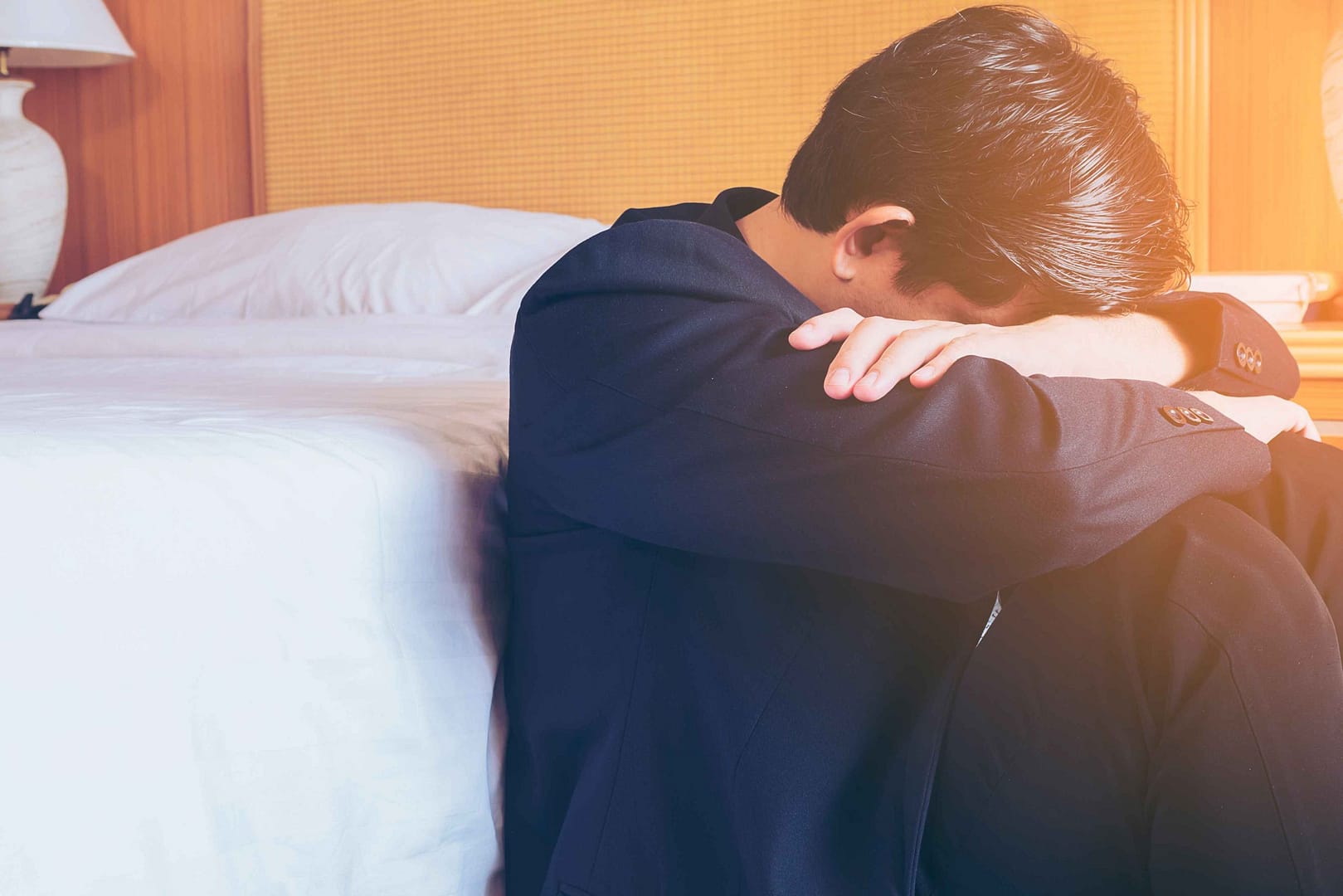Obsessive-Compulsive disorder leads to recurrent intrusive thoughts and actions to relieve internal anxiety. People who suffer from OCD might find the world around them very overwhelming due to heightened sensitivity to sensory stimuli. So, even trivial experiences become burdensome for them.
This increased sensitivity in those with OCD might lead to sensory issues on some occasions. OCD specialists in NYC can help one understand the relationship between OCD and sensory issues more systematically.
Understanding OCD
OCD is a complex disorder. This mental health issue can present itself in diversified forms. OCD mainly consists of symptoms such as repetitive thinking patterns resulting in high anxiety levels and compulsive behavior or rituals for temporarily relieving anxiety. These temporary reliefs mask a deeper problem and reinforce obsessive thoughts.
Obsessions can include contamination fears causing excessive hand washing or cleaning, and checking rituals include repeatedly checking locks or appliances. Some OCD individuals can have intrusive thoughts about causing harm. Some might require symmetry and order. OCD manifests differently in each person. However, OCD’s underlying mechanism remains the same.
The impact of OCD on daily life can be significant. Even simple everyday tasks can become intimidating. OCD basically increases people’s sensitivity to non-threatening stimuli.
Gain an in-depth understanding of OCD with the assistance of OCD therapist New York.
The Connection Between OCD and Sensory Issues
Obsessive-Compulsive Disorder (OCD) is not only about obsessive thoughts and compulsive actions. It has a lot to do with heightened sensory sensitivities. In individuals with OCD, regular day-to-day experiences like sounds or smells become amplified and overwhelming. This adds to the complexity of the disorder.
Heightened Sensory Awareness
Individuals with OCD often perceive their environment more acutely than those without the condition. On some occasions, these intensified sensations of perception can cause ordinary sensory inputs to become overbearing. For example, what may just be an irritating sound of water dripping to some people, for individuals with OCD, that sound could be unbearable.
Anxiety and Sensory Sensitivities
The anxiety that is associated with OCD can heighten one’s sensory sensitivities. A person without OCD might not be that bothered about wearing scratchy clothing. This same piece of clothing might cause significant distress to an individual with OCD.
This distress may lead to intense anxiety. So, the individual ends up performing compulsive rituals to combat that anxiety. These compulsions only increase the anxiety, creating a vicious cycle.
Sensory Triggers for Intrusive Thoughts
Sometimes, sensory sensitivities serve as direct triggers of intrusive thoughts. One specific sound, texture, or smell might evoke obsessions about contamination, harm, or any other fears related to OCD. The anxiety compels individuals to perform repetitive acts which they believe can reduce their anxiety. For instance, the smell of bleach can trigger the fear of contamination, leading to excessive cleaning rituals.
Studying the connection between sensory issues and OCD is crucial while developing treatment strategies. Combining traditional treatments for OCD symptoms with methods of dealing with sensory sensitivities would offer a much more holistic approach.
Find the connection between OCD and sensory issues with the support of psychotherapy and counseling services.
Recognizing Sensory Issues in OCD
Sensory symptoms of Obsessive-Compulsive Disorder (OCD) may be evident in multiple dimensions with respect to different senses. Some common sensory issues experienced by people with OCD include:
- Noise sensitivity: Certain sounds might become unbearable, like loud sounds, background music, or the sound of people chewing and breathing.
- Touch: Touching some textures can cause discomfort in certain individuals with OCD.
- Textures: Sometimes, a particular texture in food or other objects can trigger sensory issues in OCD. So they avoid it or do compulsive things about it.
- Light: Bright lights and specific types of lighting may also bother someone with OCD, leading to headaches or even migraines.
For instance, being in a crowded, noisy place can make one with OCD start thinking about contamination. So, the individual might repeatedly wash their hands.
Identify the symptoms of sensory issues in OCD by joining hands with psychotherapists in NYC.
The Impact of Sensory Issues and OCD
Having both Obsessive-Compulsive Disorder (OCD) and sensory challenges has profound implications on an individual’s daily routines and overall quality of life. This combination often turns ordinary tasks into burdens, contributing to higher levels of anxiety.
Daily Activities and Quality of Life
People who suffer from both OCD and sensory issues to certain stimuli find it extremely difficult to perform simple daily activities such as going to work, shopping at the mall, and mingling with friends. They get overwhelmed by these situations.
Having to exist in an environment filled with potential stimulants, such as high-pitch sound frequencies, bright neon lights, and rough surfaces, often leads to more nervousness. So they avoid situations like this altogether. This hampers their ability to execute normal chores and brings down their quality of life.
Increased Social Isolation
In obsessive-compulsive disorder, sensory sensitivities may cause an individual to avoid situations or environments that could aggravate their distress or compulsive acts. So, they might end up shunning social interactions and activities. This isolation adds up to their mental health problems. It aggravates feelings of loneliness, depression, and anxiety.
Emotional and Physical Drain
Juggling both symptoms of OCD and sensory sensitivities requires continuous monitoring and attention. It will be physically draining. So, the affected individuals often suffer from chronic tiredness and anger. On-going stress about intrusive thoughts, compulsive behaviors, and sensory overload can deplete a person’s emotional resources. Thus lowers overall satisfaction with life.
Seeking Reassurance
Sensory issues and OCD can often make the affected individual grow extremely sensitive towards the uncertainties of life. This leads to anxiety making them seek reassurance. However, the loved ones should support these people in embracing the uncertainties of life while controlling their anxiety and compulsions. Providing reassurance will only worsen their condition.
Evidence-Based Therapies
There are psychotherapy treatments that can deal with this combination of OCD and sensory issues. Here they are-.
Cognitive Behavioral Therapy (CBT)
For those suffering from OCD with sensory issues, CBT can be very useful. It teaches them how they can manage their reaction in the presence of uncomfortable sensations. CBT encourages people to gradually expose themselves to stimuli triggering such obsessions. CBT uses different procedures, such as cognitive restructuring, systematic exposure, etc, to assist the patient.
CBT trains an individual to question their irrational obsessions with logic. This approach helps them control the compulsion of performing repetitive acts.
Exposure and Response Prevention (ERP)
To help individuals with obsessive-compulsive disorder (OCD) overcome sensory difficulties, mental health professionals might use Exposure and Response Prevention (ERP). This treatment method exposes patients to stimuli that trigger their symptoms.
This reduces the associated anxiety levels over time. Patients are introduced to discomforting sensations in a structured, supportive environment where they learn how to live with the symptoms without responding as usual. When they face these triggers again and again without resorting to compulsions, their anxiety and sensitivity decrease, improving their quality of life.
Acceptance and Commitment Therapy (ACT)
Mental health professionals use Acceptance and Commitment Therapy (ACT) to address sensory issues associated with Obsessive-Compulsive Disorder (OCD). This therapy assists affected individuals in addressing uncomfortable sensations rather than trying to change or avoid them.
This therapy equips individuals with the tools to be present with these sensory experiences while realizing that it is not necessary for those feelings to control their behaviors. This therapy focuses on value clarification and committed action, even in the face of emotional discomfort. This method has been shown to have long-term effects as it weakens the power of sensory triggers and enables sufferers to lead meaningful lives.
OCD and Sensory Issues FAQs
1. How can sensory sensitivities worsen OCD?
There are several ways through which sensory sensitivities can make the situation worse in OCD. They can directly lead to intrusive thoughts and anxiousness. There could be overall anxiety caused by sensory overload, which makes it harder to manage symptoms of OCD. Lastly, people with OCD may avoid situations that trigger their sensory sensitivities, which can lead to social isolation and a diminished quality of life.
2. What are the signs of sensory sensitivities in OCD?
There are some major symptoms of sensory sensitivity in OCD. These include being easily bothered by loud noises, bright lights, certain textures, or strong smells. People with OCD often find crowds unbearable, making it difficult for them to handle crowds. Moreover, they cannot tolerate particular foods or clothing because of the distress caused by oversensitivity.
3. How can someone with OCD and sensory sensitivities get help?
People with OCD and sensory sensitivities respond well to therapies such as Cognitive Behavioral Therapy (CBT), Exposure Response Prevention therapy (ERP), and Acceptance Commitment Therapy (ACT). These therapies enable patients to accept their feelings toward different senses.
Conclusion
The world can seem like an incredibly overwhelming, anxious place for individuals who experience both OCD and sensory issues. However, understanding the relationship between these two ailments and consulting well-qualified therapists can greatly improve one’s capability of managing symptoms.
Searching for a compassionate psychotherapist in New York? Just contact psychotherapist Gita Sawhney at her practice GS Mental Health and Wellness in Manhattan, New York.






